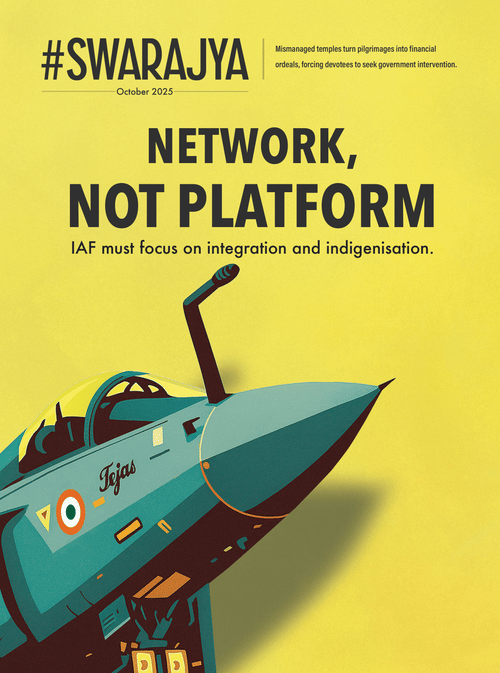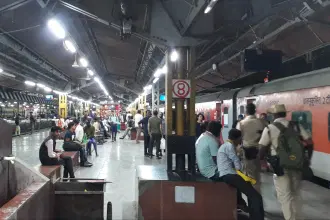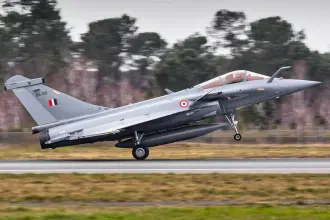Infrastructure
Industries, Ports, Pilgrimage: How Gujarat’s New Expressway Network Plans To Connect 'Em All
Swarajya Staff
Oct 04, 2025, 10:56 AM | Updated 01:12 PM IST
Save & read from anywhere!
Bookmark stories for easy access on any device or the Swarajya app.
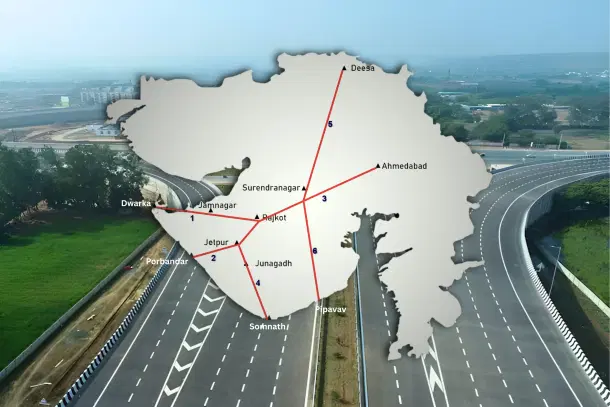
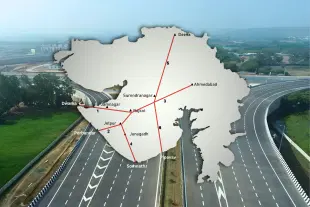
The state of Gujarat is working towards building a series of high-speed road corridors that will connect the state’s central hubs to key regions on its boundaries.
The idea is to build a strategically aligned network that enhances regional integration, supports industrial development, and links ports and pilgrimage centres within the state.
The plan includes six new expressways with a combined length of about 1,100 kilometres. The estimated cost of this network is Rs 96,000 crore. These expressways are planned in both east to west and north to south directions, giving the state a strong transport backbone. The six proposed expressways are:
Deesa to Surendranagar – 220 km
Surendranagar to Pipavav – 211 km
Rajkot to Dwarka – 209 km
Rajkot to Porbandar – 190 km
Ahmedabad to Rajkot – 170 km
Jetpur to Somnath – 110 km
The projects are being executed under the Gujarat State Road Development Corporation (GSRDC). In May 2025, GSRDC invited proposals from consultants to carry out feasibility studies and prepare Detailed Project Reports (DPRs) for the proposed six expressway packages.
The selected consultants will be tasked with assessing the technical, financial, and economic viability of the projects and preparing detailed designs for four or six-lane greenfield highways.
The studies are expected to be completed within a 12-month timeframe, during which both new alignments and potential upgrades of existing brownfield corridors will be considered.
These six sections are not standalone projects. Together, they form two larger corridor projects, the Namo Shakti Expressway and the Somnath to Dwarka Expressway. Both projects were included in the state’s 2025–26 budget and have been conceptualised as key components of Gujarat’s long-term infrastructure development plan.
The Namo Shakti Expressway will connect Deesa to Pipavav, covering 430 kilometres in total, comprising Deesa to Surendranagar and Surendranagar to Pipavav.
The project will be developed at an estimated cost of Rs 39,120 crore and it will link northern Gujarat with the Saurashtra region. This corridor will be important for both trade and agriculture, as it connects industrial hubs with the Pipavav port and shortens transport times for farmers and businesses.
The Somnath to Dwarka Expressway will cover 680 kilometres, and is estimated to be developed at a cost of Rs 57,120 crore.
It will be built in three parts, namely Ahmedabad to Rajkot, Rajkot to Porbandar, and Jetpur to Somnath. This road will provide faster connectivity to famous pilgrimage centres like Somnath and Dwarka, while also linking them with major industrial areas such as Ahmedabad, Sanand, and Rajkot.
One of the most important stretches will be the Ahmedabad to Rajkot Expressway. It runs through the Dholera to Mumbai Industrial Corridor and will support Gujarat’s fast-growing industries.
Sanand, which has become a hub for automobile and electronics manufacturing, will benefit from improved transport. Rajkot, known for its machine tools and engineering industries, will gain faster access to ports and markets.
Further, small and medium enterprises (MSMEs) in Surendranagar will find it easier to reach urban customers, while farmers in Palanpur and Deesa will get better routes to sell their produce.
The expressways will provide direct connectivity to Gujarat’s major ports, including Pipavav and Porbandar, integrating the state more effectively with national and international markets.
Once completed, this network will take the total length of four- to six-lane highways in Gujarat to more than 8,000 kilometres. As per reports, development plans also include overpasses and underpasses for wildlife crossings.
Approximately 45 per cent of Gujarat’s population, across 13 districts, is expected to benefit directly from this improved road network.
With the expressways, district headquarters will be accessible within an hour, reducing travel times and improving access to healthcare, education, and government services.
Around 42 interchanges are planned across the two mega expressways, ensuring that smaller towns and villages are also well integrated into the high-speed network.
To improve commuter experience, wayside amenities such as rest areas, fuel stations, and food courts will be established every 50 kilometres.
